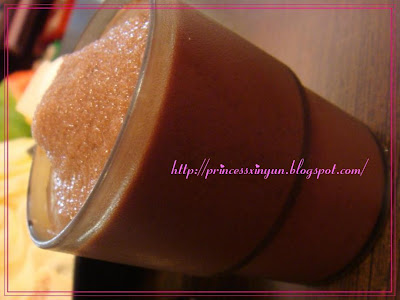
The Black Face General has been in the limelight in recent years for its anti-cancer properties. Locals have been reported to use the herb for the treatment of uterine fibroids and leukaemia. Currently, research staff at the University Putra Malaysia are carrying out studies to better understand the medicinal properties of this amazing plant. A native of Java, the plant has long been used for the treatment of snakebites, kidney stones and diabetes in Indonesia.
In this article, I would like to share with members of Green Culture Singapore what I have learnt about the herb from reading the published materials available as well as from conversations I had with various people who knew more than I did about the herb.
THE PLANT
The name "Black Face General" is derived from the direct Chinese translation of the term locals here use to refer to the plant . The name probably originates from the dark colour of the leaf infusion. It is botanically known as Strobilanthes crispus (L.) Blume and is a member of the Acanthaceae family. The Persian Shield, a popular houseplant in the West, S. dyeriana, is a close relative of the Black Face General. Other Strobilanthes species are valued as commercial dye plants.
The Black Face General is a woody spreading shrub that can easily reach more than a meter in height in cultivation. The dark green leaves of the Black Face General are elliptical in shape and have an attractive, glossy sheen. They are also rough to the touch. In addition, they occur in pairs that grow on direct opposite sides of the stem, which is a characteristic of plants belonging to the Acanthaceae family. The Black Face General rarely produces flowers. The buds are borne in leafy sheaths and the yellow flowers that emerge are said to be able to reach up to 2cm in diameter.
I was confused at first when I read the botanical description of S. cusia (Nees) Kuntze (syn. S. flaccidifolia). From the descriptions, both plants have very similar looking leaves and S. cusia also has medicinal properties and the twigs of S. cusia are used to prepare a dark blue dye used for dyeing cloth. After some comparisons, the only way for an untrained person to distinguish the two Strobilanthes species is probably via the flower colour of the two species: S. cusia has purple flowers whereas S. crispus has yellow flowers.
GROWING THE PLANT
The Black Face General plant is essentially a fuss-free and robust plant but it is not one that is fast growing. It is not particular about soil type, as long as the substrate it grows in is well drained and kept moist at all times.
Established plants grow happily in full sun outdoors and fortunately, the plants are forgiving enough to be able to grow rather comfortably in semi shade. Apartment growers are advised to grow the Black Face General in the brightest possible location. The plant needs to have some sunshine falling on it for at least 6 hours.
The plant should be cut back periodically to contain its spread and to keep it in shape. Pruning will also encourage branching. You can save the trimmings for propagation or use the leaves for medicine.
As with all plants grown for its foliage, feed with a fertilizer with a higher nitrogen ratio. Organic and inorganic fertilizers are both suitable.
Above: Rooting stem cuttings - leaves are kept to a minimum to reduce moisture loss.
The Black Face General can be propagated via stem cuttings. Segments of the stem should at least have a node and dip the moisten end in some rooting powder to aid rooting. Green and young stems root easier than woody ones. Remember to remove the leaves from each stem cutting to reduce moisture loss and bag them to conserve moisture.
NOTES ON HOW THE PLANT IS USED
The leaves of the Black Face General are the part of the plant that is used. They are used in either the fresh or dried form. The latter form offers a longer shelf life if dried leaves are kept in sealed bag, away from sunlight, heat and moisture. Ladies who are pregnant are advised to use this herb with caution.
When fresh leaves of the plant are used, they can either be made into a puree or juiced which is then consumed directly. The leaves can also be boiled to yield an infusion. Some formulations involve the boiling the leaves of the Black Face General with other indigenous medicinal herbs such as the Clinacanthus nutans and Phyla nodiflora .
Dried leaves are crushed prior to simmering them in hot water. The resulting yellow-tinged infusion can be flavoured with sugar and drunk as a tea.
资料来源 : http://www.greenculturesg.com/articles/jan06/blackfacegeneral.htm






 海鲜总汇锅
海鲜总汇锅






























 起司马铃薯文字烧
起司马铃薯文字烧







